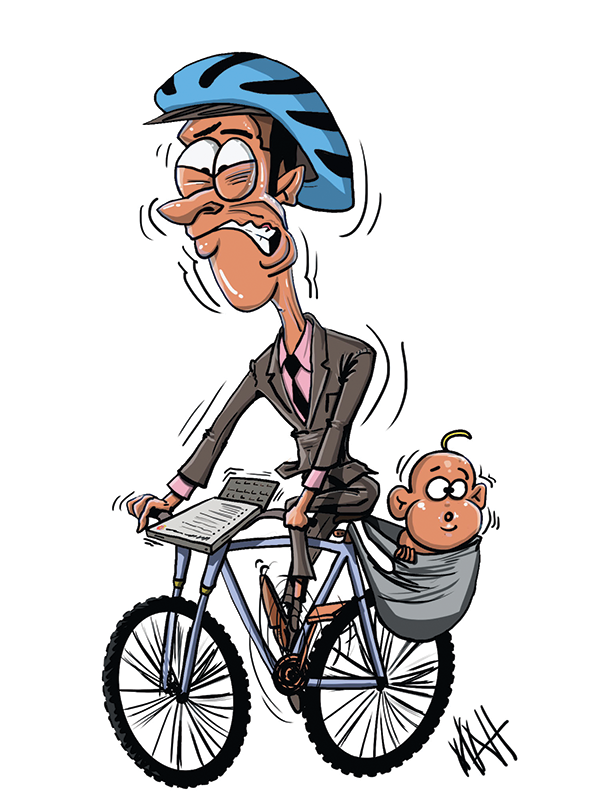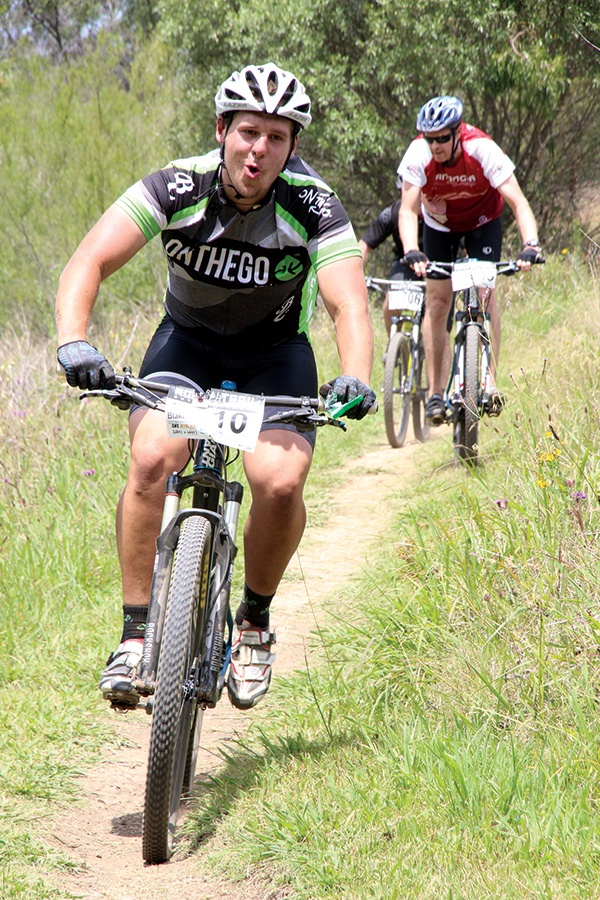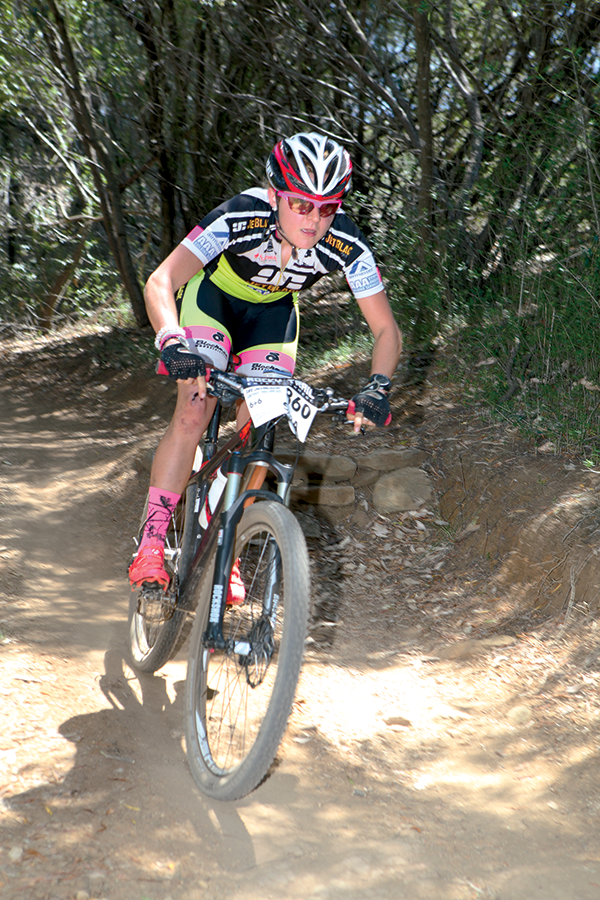Training for the Time Poor Mountain Biker
 I’ve heard that everyone in Hollywood would like to be thinner and richer. I am not sure if this is actually true, but in that vein I am certain that everyone who loves mountain biking would like to be faster and have more time to ride. This is one of those ‘good news/bad news’ situations. I can offer absolutely no advice on how you are going to get more time to ride (the bad), but I have lots of experience in helping people go faster on their bikes (the good).
I’ve heard that everyone in Hollywood would like to be thinner and richer. I am not sure if this is actually true, but in that vein I am certain that everyone who loves mountain biking would like to be faster and have more time to ride. This is one of those ‘good news/bad news’ situations. I can offer absolutely no advice on how you are going to get more time to ride (the bad), but I have lots of experience in helping people go faster on their bikes (the good).


After three or four cycles it is time to switch things up. Like the changing seasons of the planet, I call these 16-week periods seasons.
Over a year you can spend one season on each enabling factor and have the fourth season more generalised. Keeping things fresh keeps your body adapting, maintaining progress over the months and years.
So if you’re strapped for time but still want to improve, don’t despair. Formulate a plan, structure your riding as I’ve outlined and you’ll gain far more out of you riding time. Combine this with a sensible diet –
balancing the calories that go in and out – and you’ll be shocked by how much you’ll improve. Don’t just ride, ride smart and you’re sure to reap the rewards!
Suggested Drills
Climbing Repeat (for strength and endurance): This drill involves riding your bike in a good position (don’t let yourself slump or twist) and grinding up a non-technical hill, pedalling at around 60 rpm (one complete pedal revolution per second if you don’t have a cadence meter). You should remain seated the whole time. The ideal hill is about 10 minutes long (obviously you can stop early if your local hill is longer). Start with two 10 minute efforts and work up to several over the course of a few months. Try to quit each session before exhaustion sets in completely.
Climbing Interval (for endurance, power): This climbing effort uses a smaller gear and therefore a much higher cadence; around 90 rpm. You remain seated and ride up a hill for four minutes and 45 seconds. This first ascent establishes the baseline for the day by climbing for 4:45 and for each subsequent ascent you will ride to the exact same point. When it takes more than 5:00 to get up the hill, you are done.
Short Interval (improves power and strength): Find a straight section of flat to slightly descending trail. Aim for an extremely hard effort that takes between 30 seconds and three minutes. After each go, take a set break between 30 seconds and five minutes to recover. Try to start out too slow so that you can finish evenly. Most people go out too hard and have to ease up part way; it takes several sessions to learn just how hard you can go. After several repeats, when your effort feels like rubbish, quit. There’s absolutely no point in doing poor quality efforts. I like to start at one minute ‘on’ and three minutes ‘off’ and vary things once you really nail the execution.
Long Interval (works endurance and strength): On a flat to undulating bit of trail begin with five minutes of hard effort followed by a five minute roll down to recover. Use a loop trail if possible with no tight corners or steep slopes.
Note that these will be quite a lot mellower than the ‘Short Interval’ because they last much longer. When you can do several of these at the same effort level in the one session, double the ‘on’ times to 10 minutes. You may even want to go to 20 minutes ‘on’ when you get good at doing the 10 minute efforts.
Endurance: Work in some longer duration, moderate effort rides to build up your endurance abilities. Your endurance target heart rate (or power) is approximately 70-90% of your threshold heart rate (or power). In basic terms, you can ensure you are in the ‘E-zone’ if you can at least speak in short phrases. But make sure you aren’t slacking off either—see ‘recovery’ below. Start off with 30 minutes and work up. The longer these go (within reason), the better, so make the ride as long as your schedule will permit.
Recovery: Quite gentle rides that promote active recovery. If the ability to speak means you are in the E-zone then the ability to sing out loud means you are in the R-zone. Try it! As you pick up speed you will lose the ability to sing, but will still be able to talk—this indicated that you’re going too hard and have gone from ‘recovery’ to ‘endurance’.
Six Weeks to a Faster Ride
Absolutely time strapped but still need to get fit? Well there’s one drill I know of that can dramatically increase your fitness with only six weeks of riding a mere 15 minutes per day for five days in a row and 45 minutes on the sixth day.
It requires a trainer, a speedometer and a load of dedication because it is tough. Called the Tabata Protocol, it is named after Dr Tabata who built a team of winning speed skaters in Japan.
With a 10 minute warm-up, get your heart rate slowly up the point where speaking is a bit difficult (about 75% of threshold if that means more to you). Then you put it in a fairly large gear and pedal at around 100rpm for 20 seconds keeping the speed constant (I suggest trying 40kph if you don’t know where to start). You then take a 10 second break.
Next you repeat the 20 seconds ‘on’ and 10 seconds ‘off’ until you fail. By ‘fail’ I mean that you can no longer achieve the original set speed or you couldn’t hold it for 20 full seconds.
Then have a couple of minutes to cool down before calling it a day—you’re done and it only takes 15 minutes!
If you didn’t achieve five full intervals then drop your speed by 2kph for next session. If you finished between five and nine efforts, then your efforts are on track and you should aim for the same speed next time. If you did more than nine efforts, increase the speed by 2kph for the next session.
This advice applies to the five short sessions. For the one longer weekly session do the same warm-up, then ride for 30 minutes at 60% of the speed you were using the day before. Finish off with exactly four intervals at full speed with a five minute cool down to finish. Have the last day of the week completely off the bike.
Training Sessions






